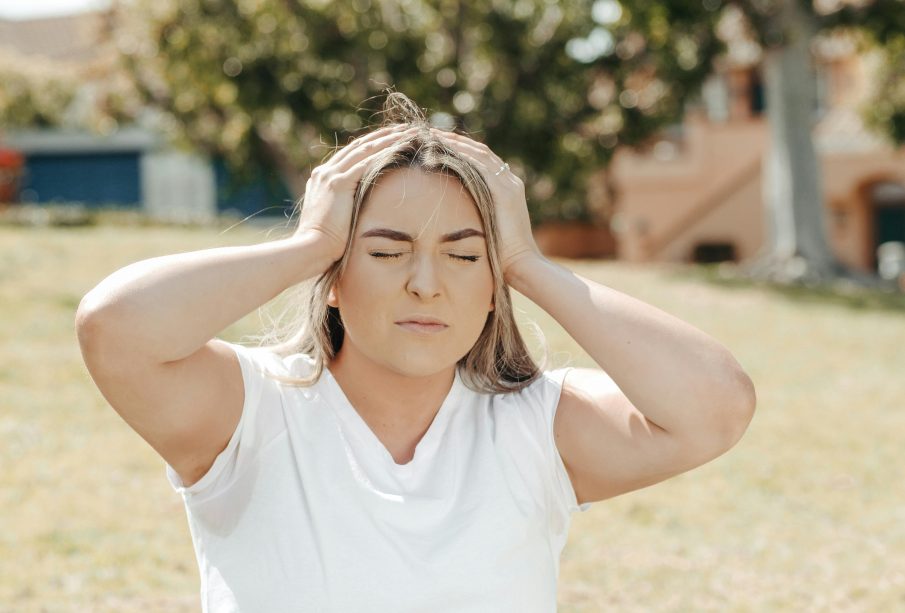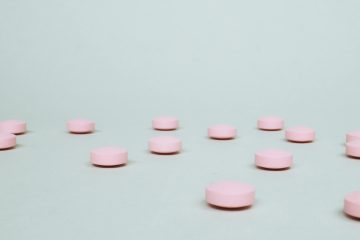
Pain between the temples can be very annoying, but headaches and headaches on the top of the head are not right… Which can help manage and prevent these discomforts. This post examines a few typical triggers and explains why these headaches happen.
Stress and Tension:
- Stress is the most common cause of a headache at the top of the head. Under stress, not only do we clench our teeth, we also tense the muscles, including those in the scalp and neck.
- That pressure can then result in what we commonly refer to as a tension headache. These headaches often have that sensation of a tight band around the head, and pressure primarily on the top of the head.
- Stress relief: Practising relaxation techniques, such as meditation or deep breathing, can help. Stress management with exercise and diet may also reduce the incidence of headaches.
Poor Posture:
- Poor posture from working long hours and sitting on your couch with a slumped back could trigger headaches.
- Weekday Alignment: If your body is not in alignment, your neck and shoulders will feel the burden. You would also feel pain on the top of the head as this strain travels up.
- Improving posture is essential. This can be alleviated by making sure workspaces are ergonomically set up and taking regular breaks to stretch and move.
- When your alignment is better, headaches associated with poor alignment will go away, too.
Dehydration:
- Lack of water can cause dehydration, one of the most common causes of headache. Dehydration impairs bodily functions, and therefore causes discomfort.
- A dehydration-related headache typically develops when your body is losing more fluids than it is consuming.
- Hydration is the key to avoiding these headaches. Regularly drinking enough water during the day and eating high-water-content food can help ensure sufficient hydration.
Sleep Disturbances:
- Another possibility is insufficient or poor sleep. Lack of sleep disrupts the body’s natural encourages and can result in headaches for the that morning.
- Likewise, sleeping too long can also cause headaches when the normal sleep rhythm is disrupted.
- You want to set a bed time and wake up time and stick to it, as closely as possible.
- Consistently going to sleep and waking up — even on weekends — helps keep the body’s internal clock in sync and may also help prevent sleep headaches.
Dietary Factors:
- Food or drink can cause headaches in some people. These could be caffeine, alcohol, and foods with additives such as nitrates or monosodium glutamate.
- By identifying and staying away from these triggers, headache occurrence can be controlled.
- A food journal might help to identify potential dietary triggers. After they are identified, removing or reducing these foods in the diet can help to prevent headaches.
Environmental Factors:
- Things from the environment, such as bright lights, strong scents and loud noise, can facilitate headaches. Everyone’s sensitivity is different, but all of these can create discomfort on top of the head.
- Making the lighting have the right level of illumination, preventing loud noises, and not having any strong odours will make it more favourable to avoid these triggers.
- Sometimes sunglasses can help, and other times, noise-cancelling headphones.
Physical Exertion:
- Strenuous exercise, especially if it’s out of the blue or a different kind of exercise than usual, can trigger headaches. More commonly known as exertional headaches, these usually occur during or after vigorous exercise.
- Overcoming these painful experiences, as with any workout — starting slowly and respecting the need for hydration and nutrients (Hello, chocolate face with mittens. Paying attention to the messages that the body sends as well as taking rest breaks every now and then may help avert these headaches.
Conclusion
Causes—A Headache on top of the head may have numerous different triggers, including lifestyle-related, environmental, etc. Knowing these triggers is the starting point for controlling and preventing headaches. Practising some healthy habits and just a few changes can minimise pains and aches altogether. Knowing how our body acts and reacts greatly helps in getting relief and living life without headaches.
See also: Outie Belly Button: Causes and Treatments
What Is NAD Supplement and How Does It Work?
August 8, 2025Outie Belly Button: Causes and Treatments
August 8, 2025Magnesium Spray Benefits: What You Need to Know
August 8, 2025
Leave a reply Cancel reply
You must be logged in to post a comment.
-
Kente oil
January 30, 2023 -
NYC Home Inspection Checklist and Cost
July 27, 2022 -
The 10 Best Blue Mountains Private Tours
August 26, 2024





